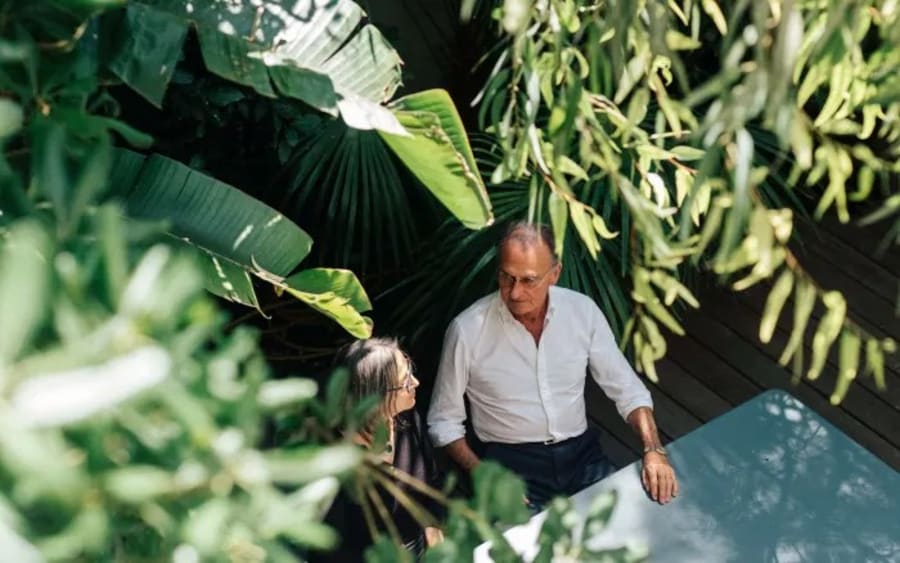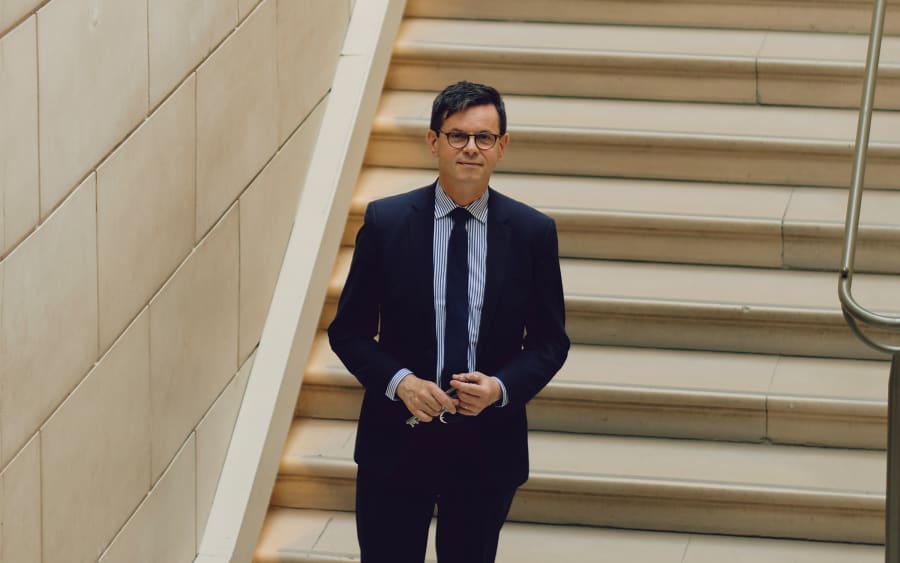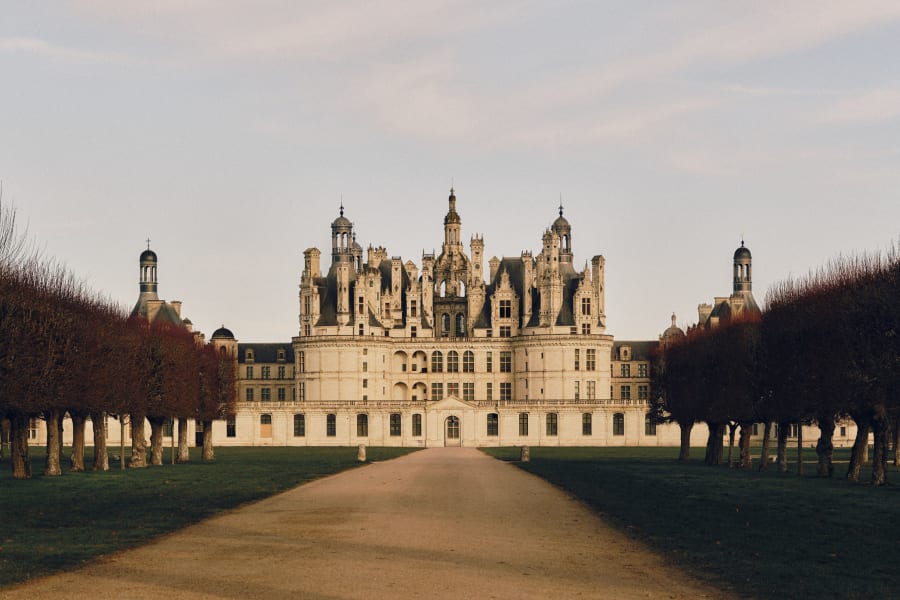巴黎大皇宮(Grand Palais)擁有錯綜複雜的展廳、圓形大廳、2800扇門扉,以及由玻璃與鋼鐵穹頂覆蓋的巨型中殿,其結構之獨特,世所罕見。這座建築的壯麗影像早已風靡全球,尤其是在2024年巴黎奧運會更是深入人心。正如主席Didier Fusillier所言,它堪稱「首都巴黎最宏大的紀念碑」。當然,它也是巴塞爾藝術展在巴黎的標誌性場地。
2023年9月,Fusillier正式接替克里斯.德肯(Chris Dercon),執掌該公共機構。自大皇宮於今年夏季全面重啟以來,他欣喜地見證了「遊客們為其修復後的輝煌所震撼」的景象。然而,當被問及職責範圍時,他笑著表示,這座龐大的建築和其宏大的項目僅僅是「冰山一角」。此外,他還肩負著法國國家博物館聯合會(Réunion des musées nationaux)的重要職責。這個機構的歷史可追溯至1895年,其最初的使命是為國家收藏收購藝術品。
法國國家博物館聯合會匯聚了博物館學的深厚專業知識,於2011年與巴黎大皇宮合併。「這個國家機構目前管理16座城堡與博物館,」Fusillier解釋道,「包括巴黎的中世紀國立博物館克呂尼博物館(Musée de Cluny)、萊塞濟(Les Eyzies)的卡納克史前博物館(Musée national de Préhistoire)以及尼斯(Nice)的夏加爾博物館(Musée national Marc Chagall)等等。此外,貢比涅城堡(Château de Compiègne)等著名景點也由其管理。」
除了重要的出版業務,巴黎大皇宮暨法國國家博物館聯合會(GrandPalaisRmn)還負責管理38間博物館商店,其中以凡爾賽宮(Versailles)、奧賽博物館(Musée d'Orsay)與羅浮宮(Louvre)的商店最為知名。機構同時運營一間優秀的鑄模工坊——這枚巴黎大皇宮暨法國國家博物館聯盟的瑰寶,不僅為法國及世界頂級博物館製作高度還原的雕塑復刻品,也承接丹尼爾.阿爾軒(Daniel Arsham)、傑夫.昆斯(Jeff Koons)和Prune Nourry等當代藝術家的特別委約。「我們不用3D技術,」Fusillier說,「而是採用傳統鑄模工藝,使用大理石粉和特製樹脂,精確捕捉雕塑的形態。」這間位於聖丹尼(Saint-Denis)的工坊還保存著珍貴原始模具,包括米高安哲羅(Michelangelo)《聖殤》(Pietà)的模具及吳哥窟寺廟(位於現在的柬埔寨)的淺浮雕模具。「這地方簡直令人歎為觀止。」他補充道。
隨著巴黎大皇宮的修繕工程進入尾聲,Fusillier肩負著在平衡機構預算的同時,啟動2億歐元工程貸款償還的挑戰。這無疑是一項複雜的任務,但他似乎沒有太大的心理壓力。「這件事其實還挺有意思的,」這位身形健朗的六旬掌舵人笑言。這位熱愛航海且經驗豐富的單車手,喜歡自稱為「北方人」,職業生涯多數時間遠離巴黎,似乎對壓力渾然不覺。無疑地,他亦將這個於事業巔峰時期獲得的顯赫職位,視若加冕時刻般細細品味。
他的過往經歷似乎與如今的職位毫無關聯。「我來自戲劇界,」他輕描淡寫地說道。早年執掌比利時蒙斯(Mons)的Théâtre le Manège,仿彿在他身上烙下了表演者的印記。他從那段歲月中保留了對現場表演的偏愛,始終推崇大眾慶祝的精神——他認為這種儀式帶來的歡樂對「社會平衡至關重要」。
數碼藝術、舞蹈、表演、戲劇——多元藝術形式和學科融合已成為他的標籤:1993至2015年,他主導Maison des Arts de Créteil的Exit festival;2004年,他推動里爾(Lille)榮膺「歐洲文化之都」(European Capital of Culture);其後,長期主導「Lille 3000」項目直至2015年。此後,他將這套理念帶入維萊特(La Villette),在此開創了「Micro-Folies」——一項透過技術將法國主要博物館藏品帶給全球各地觀眾的創新文化實踐。
從雜技編舞(如2025年6月哈希德.烏蘭登[Rachid Ouramdane]的《Vertige》)、展覽、戲劇,舞蹈、表演、舞廳派對、巴西巡遊、DJ演出,再到Fun Palace的美食聲效實驗——在他策劃的項目開幕季「Grand Palais d'été」中,Fusillier職業生涯中積累的所有藝術元素悉數登場。大皇宮的華麗空間為藝術融合更添異彩:從丹麥皇家掛毯,到充氣藝術品,再到甩手舞對決,各種元素交相輝映,共同構建了一個別具魅力的藝術格局。
這份跨界融合的雄心壯志建立在聯合製作的基礎上,因為「這座巨大的空殼」本身並無館藏。對於正在修繕的龐畢度中心(Centre Pompidou)而言,這反倒是一個絕佳機會——該中心接管了其中六個展廳。有人擔憂是否會帶來限制?Fusillier對此不以為然,認為這很荒謬:「如果沒有龐畢度中心,我們不可能推出妮基.聖法爾(Niki de Saint Phalle)、尚.丁格利(Jean Tinguely)與蓬杜.於爾丹(Pontus Hultén)的聯合展覽,也無法在12月中旬呈獻聚焦龐畢度平面藝術收藏的「Trait pour trait」展。「這是一種戰略合作夥伴關係——比如Chanel作為主要贊助商(grand mécène)對機構的支援——對於完全依靠票務與贊助的項目而言,這種支持至關重要。
Fusillier不僅計劃再度推出大型展覽——2024年底鹽田千春(Chiharu Shiota)的壯觀絲線裝置展,同時積極通過完全開放的文化項目及個人化會員訂閱模式吸引Z世代觀眾。訂閱會員享有巴黎大皇宮暨法國國家博物館聯盟展覽的無限次優享通道,以及獨家折扣與權益。
今年將迎來第五屆巴塞爾藝術展巴黎展會,屆時將邀請當代藝術家克萊爾.特伯萊(Claire Tabouret)與伊娃.若斯潘(Eva Jospin)共同呈獻雙人展,作為壓軸大戲。Fusillier語調愉快,坦言直到今年夏天他才意識到,這場展覽——旨在呈獻繪畫與雕塑作品之間的新對話——定於今年12月開幕,而不是明年。也許是一時晃神。
在如此繁忙的日程中,巴黎大皇宮暨法國國家博物館聯合會主席保持持續好奇心的秘訣是什麼?「我置身於一個國際化的社交網絡中,並與團隊並肩工作。我經常奔波於世界各地,參與展覽和活動,即便這意味著要日夜兼程,」他說道,「正因如此,我最近在布魯塞爾發現了傑出的打擊樂團,在巴塞爾藝術展『意象無限』(Unlimited)展區欣賞了仰慕已久的藝術家的裝置藝術,去年更在米蘭王宮(Palazzo Reale)邂逅了杜嘉班納(Dolce & Gabbana)的展覽。」對他而言,時尚是藝術的自然延伸——尤其考慮到大皇宮早已成為Chanel的秀場。
在Fusillier堅定的信念中,有一條始終不變:巴黎大皇宮應向公眾免費開放——如今,這已成為現實。「近7,000平方米的空間免費開放,包括Salon Seine等家庭友好空間。這是我一直深切關注的事情,」這位孜孜不倦的藝術民主化宣導者說道。
巴黎大皇宮宛若一艘巨輪,未來的航程註定波濤起伏。但這位旺代環球賽(Vendée Globe,在法國每四年舉辦一次的單人環球帆船賽)的忠實擁躉,既不畏懼驚濤駭浪,亦不屑於風平浪靜。
Anne-Cécile Sanchez是一位常駐巴黎的自由記者與編輯,長期為《Le Journal des Arts》、《L'Œil》及《Projets Médias》等刊物撰稿。
頁頂圖片標題:哈希德.烏蘭登,《Vertige》,照片由Quentin Chevrier拍攝
2025年9月1日發佈


